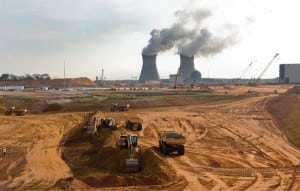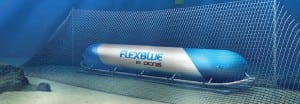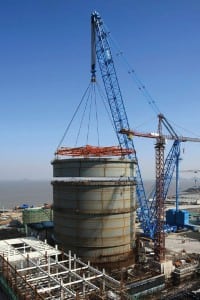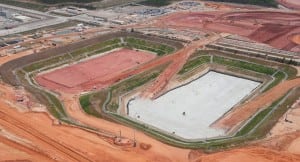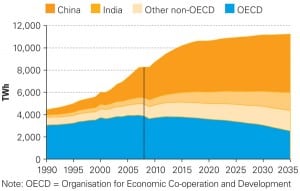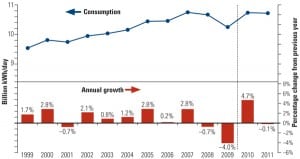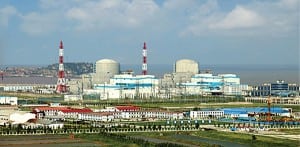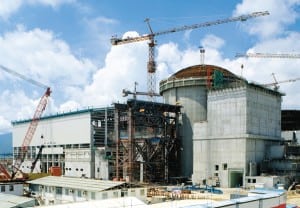Nuclear
-
Nuclear
Nuclear Fever Breaks
Excitement over an expected nuclear renaissance reached fever pitch over the past decade. Today, the original volume of announced projects has been sifted, leaving just a few serious ones that may match well with the level of loan guarantees recently announced as part of the president’s budget proposal. The pace of progress is slow, yet progress is almost certainly unavoidable.
-
Nuclear
Small Nuclear Reactor Concept Goes Underwater
France in January announced its contribution to the wave of small and modular reactors (SMRs): a submarine-like nuclear plant that can be submerged in waters 60 meters (m) to 100 m deep and several kilometers offshore.
-
Coal
Canada’s Provincial Power Strategies
In Canada, as in the U.S., where you live determines the type of generation technology that provides your power. Here’s how the four most energy-intensive provinces in Canada are responding to the challenge of providing reliable and cheap power in a sustainable way.
-
Nuclear
Major Milestones for the AP1000 Reactor
Westinghouse’s AP1000 reactor design hit several milestones in recent months, prompting speculation that it could take the coveted lead in the charge to deploy the world’s third-generation nuclear power plants.
-
Nuclear
Ukraine Opens Chernobyl to Visitors
The Ukraine will on April 26 mark 25 years after explosions at the Chernobyl Nuclear Power Plant (then in the Ukrainian Soviet Socialist Republic) resulted in a fire that sent a plume of radioactive fallout into the atmosphere and over an extensive area.
-
Nuclear
I&C Update on Plant Vogtle Units 3 and 4
Development of Vogtle Electric Generating Station Units 3 and 4—the first new nuclear power plant units in the U.S. in decades—has generated considerable excitement. The next generation of nuclear plants, represented by these units, includes at least two major improvements: the use of passive safety systems and a reliance on digital control systems. The latter represents a gigantic leap in modernization and a fundamental change in control of the plant.
-
Coal
IEA: Global Power Demand to Surge 2.2% Annually Through 2035
Though electricity generation has entered a key period of transition—as investment shifts to low-carbon technologies—world electricity demand is set to grow faster than any other “final form of energy,” the International Energy Agency (IEA) says in its latest annual World Energy Outlook.
-
Coal
The U.S. Power Industry 2011: The Sequel
If Hollywood were scripting the power industry story for 2011, it would be a sequel to 2010—more of the same, but just not quite as good. Natural gas gets top billing and the accolades, wind power drops to a supporting role, and new nuclear answers the casting call but has yet to get a speaking part. Coal is like Mel Gibson—a talented Oscar winner unlikely to get another leading role. In this, our fifth annual industry forecast report, the story may be familiar, but the price of admission is going way up.
-
Nuclear
Russia Powers On, Boosting Nuclear Reactor Sales
Atomstroyexport, the Russian Federation’s nuclear power equipment and services export monopoly, in September signed a US$1.8 billion contract with the Chinese government for development of the second stage of the Tianwan nuclear power plant in Lianyungang City. Under the agreement, Units 3 and 4 are to be built in a way similar to construction of the first stage of Tianwan—two Russian-designed VVER-1000 reactors that came online in 2007, each with a rated capacity of 1,060 MW.
-
Nuclear
China Begins Operation of First CPR-1000
The first unit of Ling Ao phase II (Unit 3) in Guangdong Province, China, entered commercial operation in late September. The 1,080-MW reactor is the first CPR-1000—a Chinese design—to be built, and its start-up marks a major milestone in the country’s concerted nuclear power expansion.

